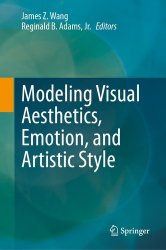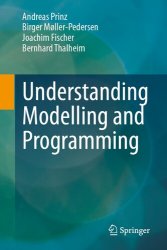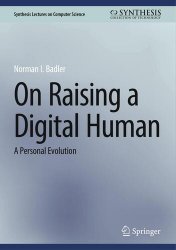 Название: Modeling Visual Aesthetics, Emotion, and Artistic Style
Название: Modeling Visual Aesthetics, Emotion, and Artistic StyleАвтор: James Z. Wang, Reginald B. Adams, Jr.
Издательство: Springer
Год: 2024
Страниц: 408
Язык: английский
Формат: pdf (true), epub
Размер: 42.7 MB
Modeling Visual Aesthetics, Emotion, and Artistic Style offers a comprehensive exploration of the increasingly significant topic of the complex interplay between human perception and digital technology. It embodies the cumulative knowledge and efforts of a wide array of active researchers and practitioners from diverse fields including Computer Vision, affective computing, robotics, psychology, data mining, Machine Learning, art history, and movement analysis. This volume seeks to address the profound and challenging research questions related to the computational modeling and analysis of visual aesthetics, emotions, and artistic style, vital components of the human experience that are increasingly relevant in our digitally connected world.
The book's vast scope encompasses a broad range of topics. The initial chapters lay a strong foundation with background knowledge on emotion models and Machine Learning, which then transitions into exploring social visual perception in humans and its technological applications. Readers will uncover the psychological and neurological foundations of social and emotional perception from faces and bodies. Subsequent sections broaden this understanding to include technology's role in detecting discrete and subtle emotional expressions, examining facial neutrality, and including research contexts that involve children as well as adults. Furthermore, the book illuminates the dynamic intersection of art and technology, the language of photography, the relationship between breath-driven robotic performances and human dance, and the application of Machine Learning in analyzing artistic styles.
Models of Human Emotion and Artificial Emotional Intelligence: This chapter bridges the gap between emotion models popular in psychology and their use in affective computing tasks. Emotion modeling has a long and varied history with several competing schools of thought. Here, through a survey of existing literature, we cover existing emotion models popular in psychology, highlighting the strengths and weaknesses of these different approaches in regard to computational tasks involving human emotion. We can break down research in affective computing that is related to emotion models into four general categories. The first broadly aligns with traditional Supervised Machine Learning techniques. Here emotion is used as a labeled ground truth target for training Machine Learning models to classify human emotional expressions. The second category is work developing methods to synthesize emotional responses from Machine Intelligence to aid in more natural human-machine interaction. The third uses Machine Learning techniques to identify statistical trends and develop new statistically grounded models of human emotion. Finally, we explore exciting opportunities in emergent behavior from large transformer and diffusion models. We highlight each of these in the following section.
A Concise Introduction to Machine Learning: Machine Learning techniques have gained significant prominence in diverse multidisciplinary research fields, encompassing computational modeling of aesthetics, emotion, and artistic style, among others. This chapter serves as a tutorial to provide researchers, who may have limited or no prior expertise in the Machine Learning community, with essential background knowledge. We commence by defining learning algorithms and subsequently explore fundamental concepts and principles underlying Machine Learning systems. Furthermore, we present a concise introduction to several typical and basic Machine Learning models. In order to cater to novice readers, particularly those without formal training in computing, Machine Learning, or statistical modeling, we deliberately refrain from extensive formula derivations. Given the pervasive utilization of Machine Learning in the modeling of aesthetics, emotion, and artistic style, grasping the fundamentals of Machine Learning becomes instrumental in comprehending recent research endeavors within these domains. By offering an overview, this chapter aims to spark interest and encourage readers to delve into more comprehensive and in-depth coverage of the fundamentals through relevant textbooks and recent research papers.
Скачать Modeling Visual Aesthetics, Emotion, and Artistic Style
[related-news] [/related-news]
Комментарии 0
Комментариев пока нет. Стань первым!















